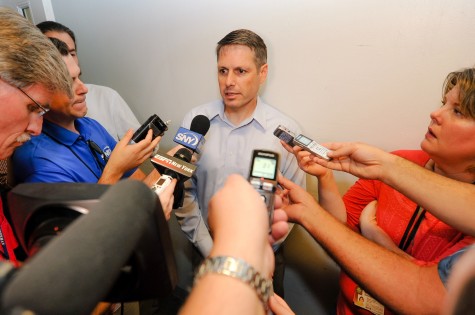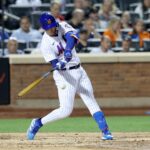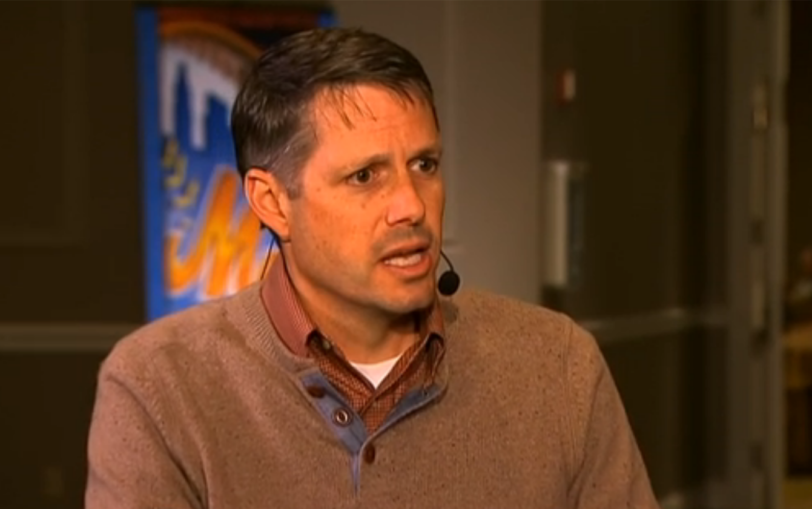
As the 2018 non-waiver trade deadline came and passed, the New York Mets’ three biggest potential trade chips — Jacob deGrom, Noah Syndergaard, and Zack Wheeler — weren’t asked to skip town despite hearing their names in the rumor mill for the past month-and-a-half. Then, long-time executive John Ricco said the magic phrase to explain why, saying he “fully expects” New York to try and compete to be a playoff team in 2019.
Hearing something like that is wonderful news on the surface. With controllable pitchers like the above three currently leading the pitching staff, it makes a lot of sense, too — there’s a finite period of time in which they’ll be this productive and this cheap.
But this is the Mets we’re talking about. Let’s just say this is a movie we’ve seen before and it’ll take a certain amount of action to prove they mean it. A recent report from the New York Post‘s Kevin Kernan could very well be foreshadowing of a disappointing offseason. Apparently, the team has had internal discussions about trying 22-year-old shortstop Amed Rosario in center field as a solution to that part of the roster.
For so many reasons, this is a terrible idea. Let us count the ways.
Some Level of Familiarity is Key
Has Rosario been as advertised with the glove so far? Not quite, according to advanced metrics. His -16 Defensive Runs Saved so far this season rank second-worst among qualified shortstops, with Manny Machado being the only one worse (-17). Machado can at least make up for it in the batter’s box in a way Rosario has no shot at doing — especially at the moment.
However, not all former top prospects are going to reach the majors and start producing like Mike Trout. It’s tough being successful on a consistent basis as a 22-year-old hitter with a tendency to chase balls out of the zone more than the average bear. If he does figure things out and starts living up to even a fraction of those high expectations, it’ll probably take some time.
Rosario is clearly already overwhelmed at the plate more often than not, so why also throw a completely new position at him? He’s better off staying right where he is. The metrics may not say he’s done a great job, but he’s at least comfortable there. And being comfortable leads to having a certain level of confidence, which is really important in this game.
Just because the Seattle Mariners are in the playoff race after acquiring and throwing Dee Gordon out in center field doesn’t mean doing the same thing to Rosario is a good idea because he’s fast and has a good arm. And outside of some highlight-reel catches, Gordon hasn’t been that great — in just 341 innings, he’s posted -10 Defensive Runs Saved.
Rosario is a shortstop and is more than physically capable of handling the position. There are also options on the current roster that would be perfectly fine in center field, like Brandon Nimmo and Michael Conforto (not to mention Juan Lagares when he’s healthy). There’s no need to try and force something that just doesn’t make sense.
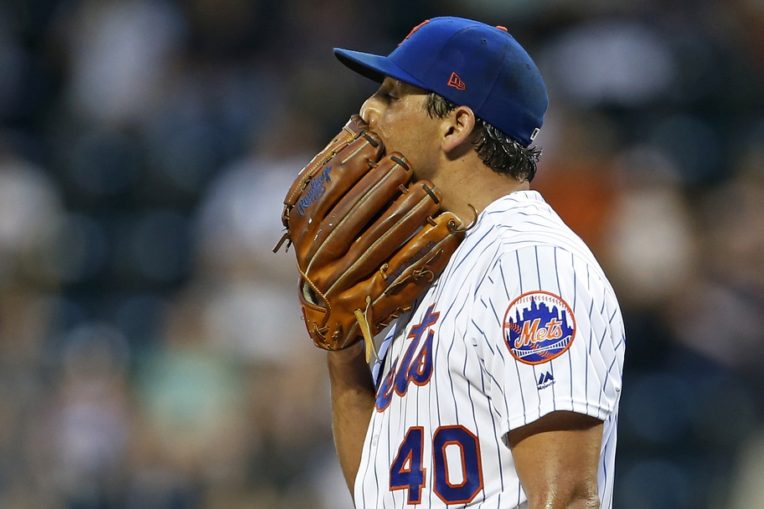
There Are Other Problems That Need Attention
Honestly, figuring out center field should be the least of the Mets’ concerns heading into the winter.
Syndergaard, deGrom, and Wheeler appear to be solid building blocks for this pitching staff, but the rest is just about anyone’s guess. The back of the rotation could use some love — Steven Matz has yet to throw more than 132 innings in a full season, and somehow, it seems like Jason Vargas could be a factor despite his best efforts to get cut this season.
Seth Lugo has proved to be a viable commodity among the starting staff, but with a less-than-reliable bullpen that could also be filled with a bunch of young and inexperienced arms, moving him out of there could further weaken that group. Unless, of course, the front office makes some meaningful moves during the winter to make up for it.
And then there’s the entire infield. Dominic Smith is playing the outfield in Las Vegas and Peter Alonso is wondering what else he has to do to get promoted to Queens, so first base is still a question mark. Jeff McNeil‘s big-league career has gotten off to a good start, but he’ll obviously continue to get evaluated over the next couple months. Todd Frazier provides a veteran presence in the clubhouse, but injuries and a lack of performance shouldn’t make him a sure thing at third base, either.
Oh yea, let’s not forget about the whole Kevin Plawecki/Travis d’Arnaud conversation we’ve been having for years now.
So, really, there’s no need to worry so much about center field because more potential answers exist there than most other places on the roster.
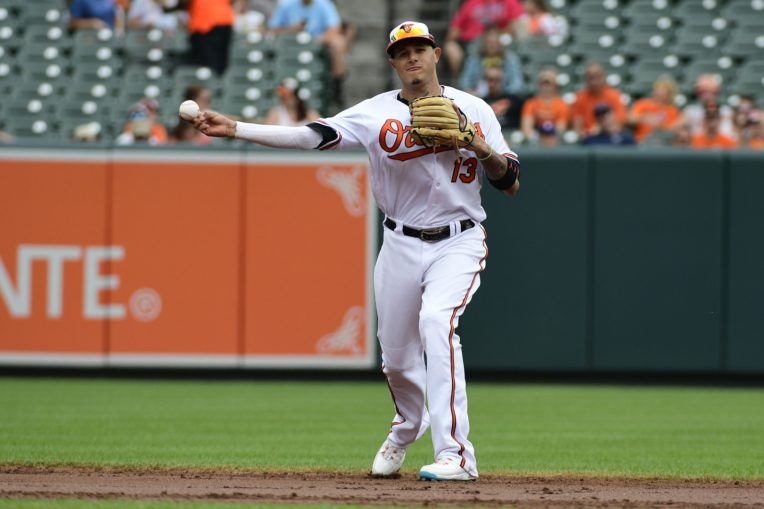
This Isn’t What Contenders Do
Look, this isn’t to say the Mets shouldn’t be having conversations like the one Kernan reported about Rosario. It’s actually a good thing — you want a front office that gets creative and considers all types of possibilities to help their team compete. How and why did this even get out to the public in the first place, though?
It seriously feels like an indirect way for the organization to temper expectations with regard to how this upcoming winter will go. That sounds like a foolish theory, but again, this isn’t the first time we’ve seen this movie.
While expecting New York to make a run at major free agents like Machado or Bryce Harper would be unrealistic based off recent history, they need to make significant outside additions to show they truly want to compete. Having another year of bringing in a mostly similar roster with the hopes of everyone staying relatively healthy isn’t going to work.
The money will theoretically be there to spend — they only have $92.5 million currently committed to 2019. David Wright and Yoenis Cespedes are responsible for $44 million in deals that are covered with insurance policies.
Contenders don’t move around young and unproven players to unfamiliar positions in order to “fix” one problem, while potentially opening up an even greater issue somewhere else. Even if the organization thinks shortstop prospect Andres Gimenez will be ready for The Show soon, there’s no telling what his learning curve will be, either.
There are no sure things in baseball, but if a team wants to contend, they need to make some bold moves and take some risks. The Mets are built upon their starting pitching, so it’s important to actually field a team behind them that can kind of catch the ball.
The initial hope was that this winter would be different as New York ramps up for 2019, but the probability of it being what we’ve gotten used to is greater than what anyone would like it to be. Now it’s up to the organization to prove us all wrong.


